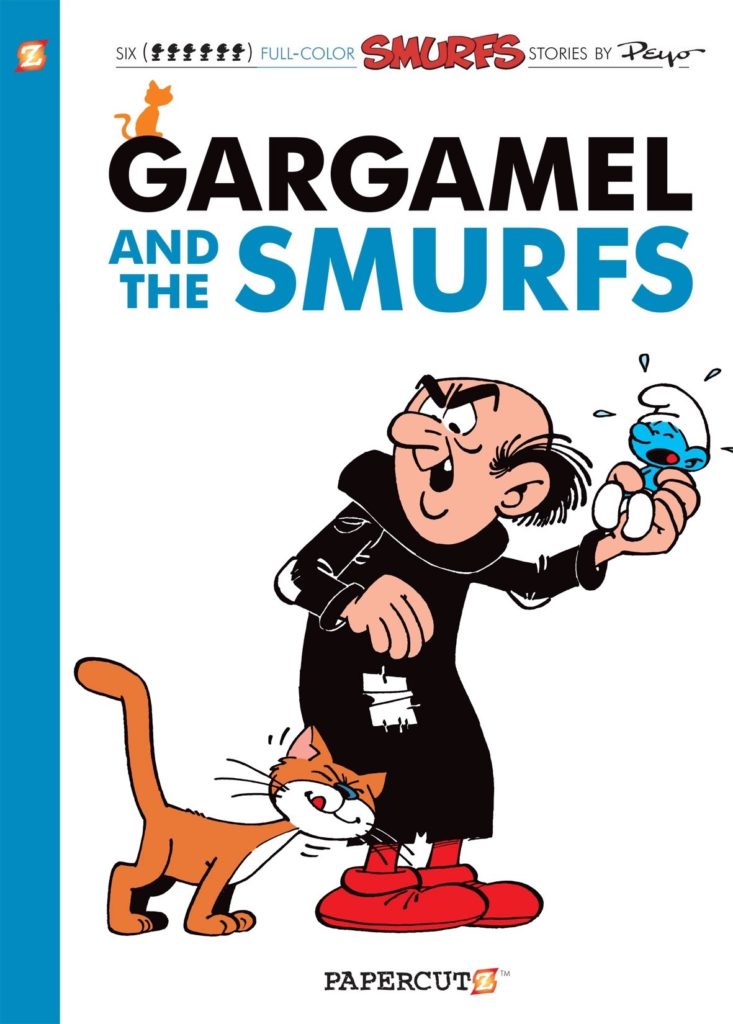Aug Stone chooses the coolest cats in comics, taking in felines from all over the world, ranging from the popular to the more obscure. From the U.S. there’s much-loved Grumpy Cat and Saga‘s Lying Cat, Blacksad and Azrael hail from Europe, while Cyborg Kuro-chan and Shaman King’s Matamune represent manga. Plus five other furballs.
1. MATAMUNE from SHAMAN KING
Art & script by Takei Hiroyuki, Kodansha (2020)
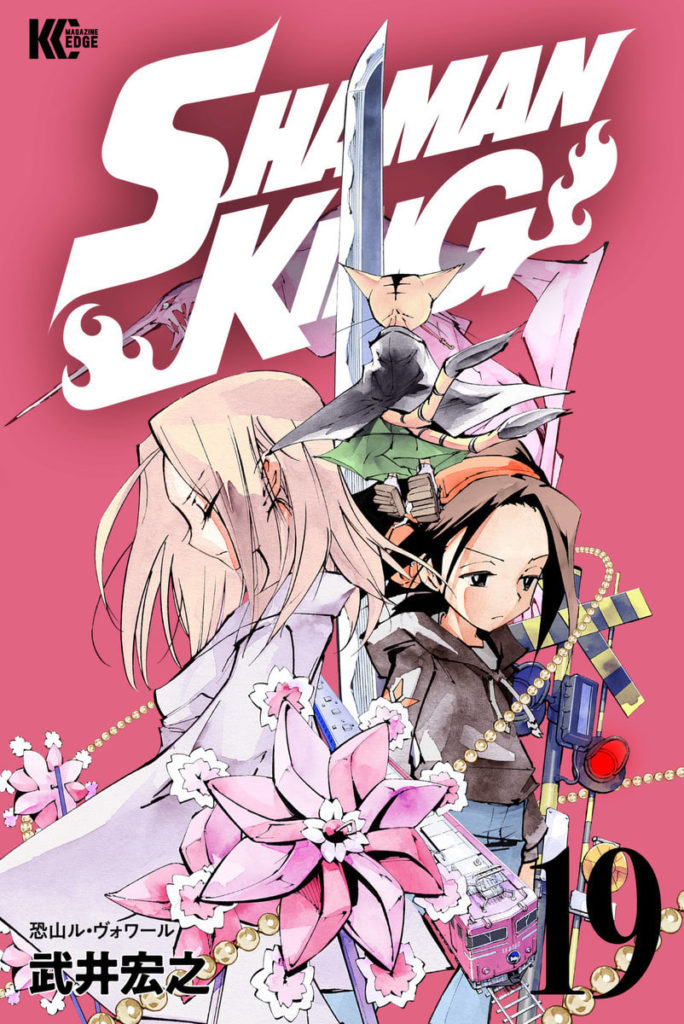
Great things come in small packages and this split-tailed spirit guide cat is no exception. Appearicng in books 19 & 20 of the Shaman King manga series, Matamune is ten-year-old protagonist Yoh Asakura’s first spirit ally in his long quest to obtain the skills to win the Shaman Fight and become the titular Shaman King. We are introduced to this feline by his wise words – “The fear is often worse than the danger itself…Worry feeds upon itself, the only cure is action” – coming from off the page. It is only next that we actually see him, first as a backlit silhouette, and then in all his grandeur – sitting cross-legged on the floor, cape strewn over his shoulders, reading a book and smoking a long pipe. A pipe that will have more uses later on. Perceptive and powerful, Matamune has been with the Asakura family for a thousand years, summoned now by Yoh-san’s grandfather to accompany the boy on his journey to Mount Osore, aka Mount Fear, to find Yoh’s fiancé.
Over the course of their travels, Matamune teaches Yoh-san many great lessons about the metaphysical and metaphorical nature of demons, fighting some mighty ones along the way. The cat’s pose in book 20, at Reincarnation 174, leaning in and staring down the largest of these creatures, hundreds of times Matamune’s own size, is cool as hell. His wisdom has been hard-earned, and we always feel his impressive presence on the page through the words he speaks, his masterful actions, right down to seeing the cool suture-like stripe down the middle of his head, sometimes covered by a stylish bowler hat, and his necklace of three bear claws.
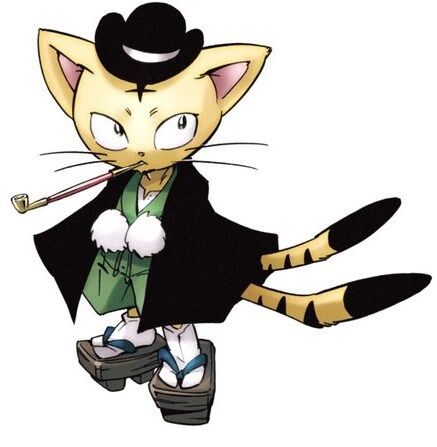
2. THE CAT from JODOROWSKY & MOEBIUS’ THE EYES OF THE CAT
Script by Alejandro Jodorowsky & art by Moebius, Humanoids (2013)
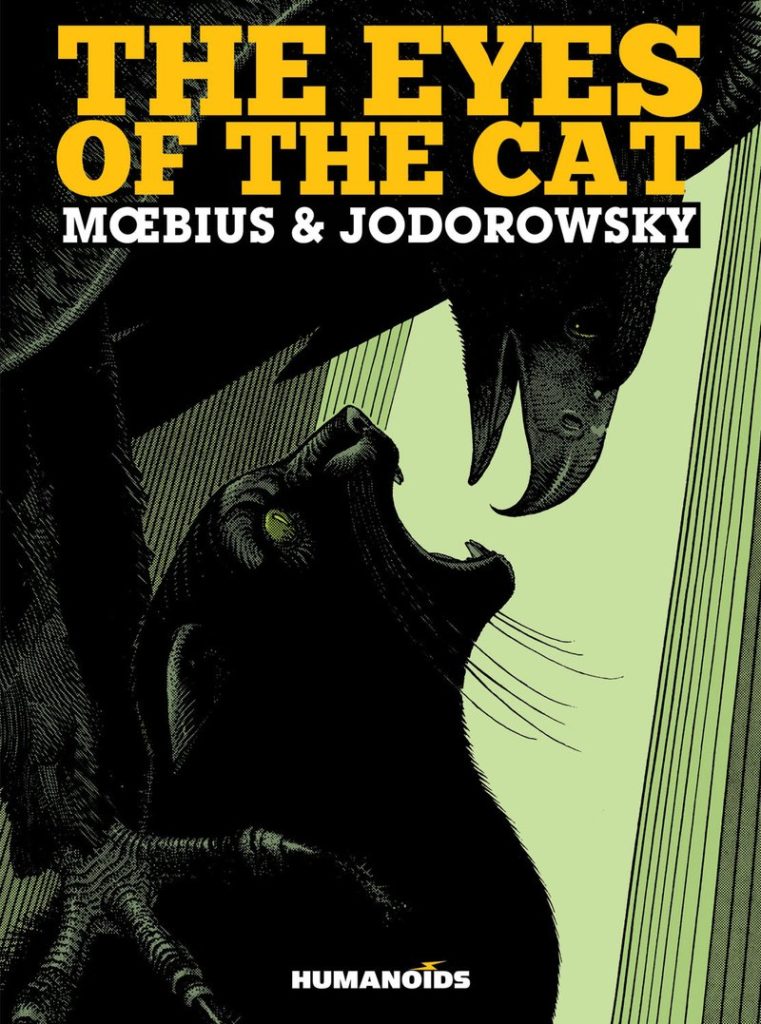
While this feline who remains nameless and is only seen on eight of the book’s 48 pages, said cat deserves its ranks amongst the coolest for being the namesake of the very first published collaboration between Alejandro Jodorowsky and Moebius. After their work on the groundbreaking plans for a Dune film was abandoned, these two masters collaborated on this mini-story for Les Humanoïds Associés, paving the way for them to change the comics game with The Incal. Central themes for Jodorowsky, such as violence and transcendence, that will show up repeatedly in his later works are seen here, beautifully symbolized in a central page where the cat and an eagle lock into struggle. Moebius’ composition of their faces suggests the sacred symbol of Yin & Yang, pointing to another Jodorowskian theme – that everything is a part of Life’s dance.
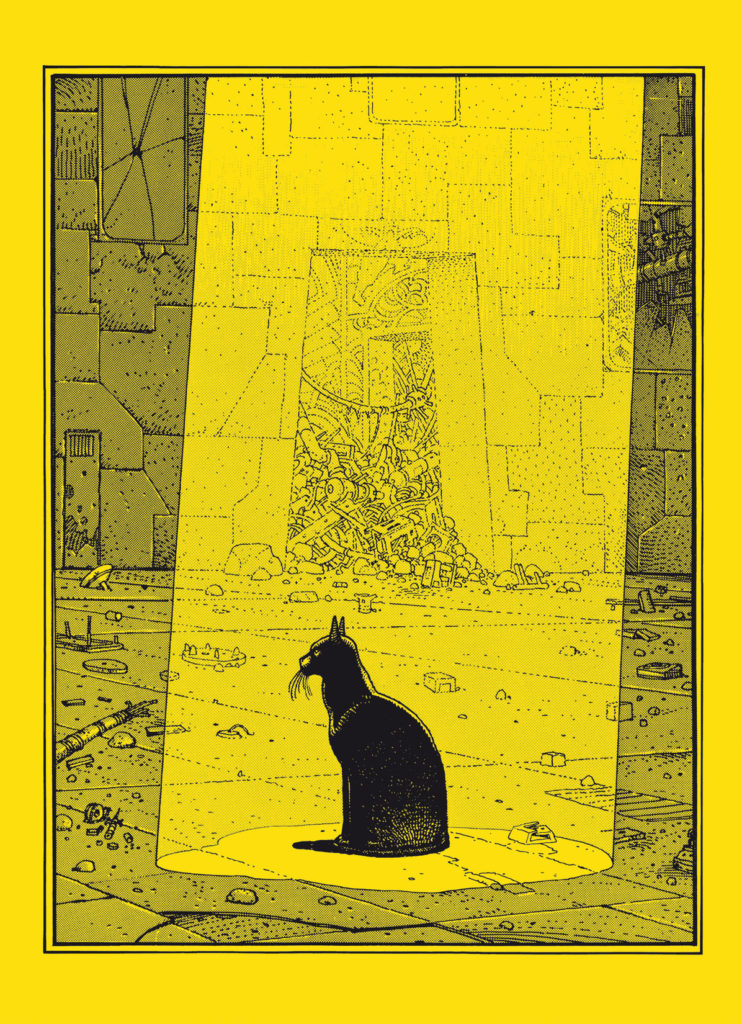
3. THE CAT from JOANN SFAR’S THE RABBI’S CAT
Art & script by Joann Sfar, Dragaud (2002)
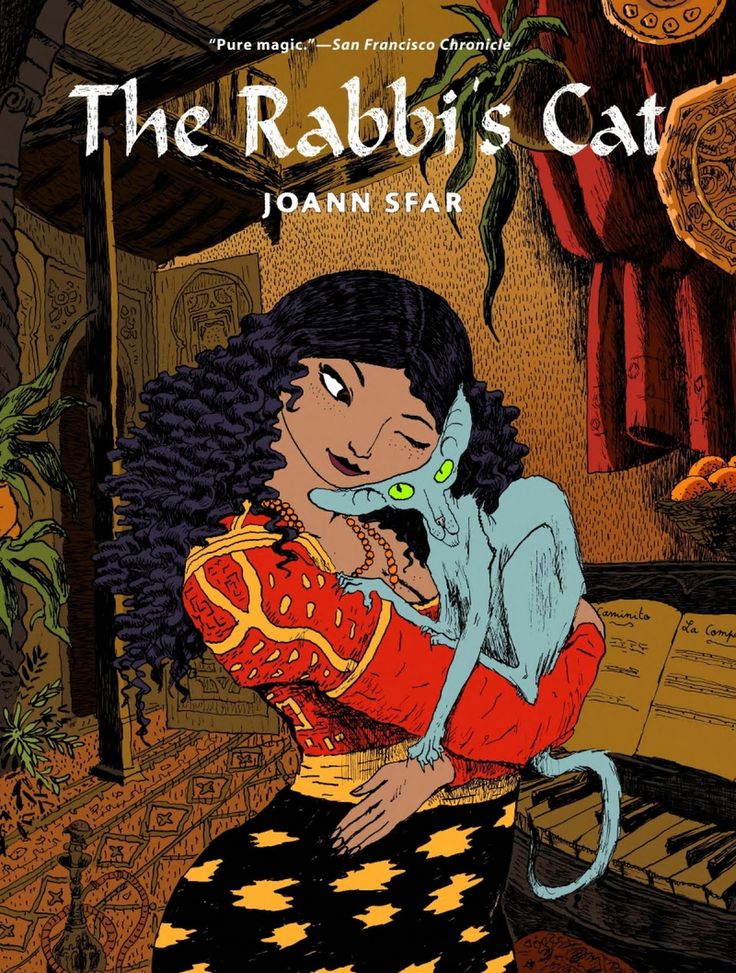
Another cat without a name, whose life touches on the mystical. Despite admitting that he exists solely to be loved by his mistress Zlabya, this skinny grey kitty gets himself embroiled in all sorts of adventures. When we first meet him, he quickly develops the power of speech, and while this is only temporary, he makes use of it by demanding to study Kabbalah and learning the ways of the Jewish tradition from his master, the Rabbi. While the cat is contentious, he is also perceptive and sympathetic, as well as being funny, wise, and loveable. His ability to talk with humans doesn’t last long, but even after that gift fades, he can still hold enlightening conversations with other animals and does so at various points throughout the books with a lion, snake, donkey, and a dog. This pet accompanies his master on all sorts of adventures throughout Algeria, heading also to Paris and deep into Africa, on quests both familial and spiritual, all the while giving us a good look at Jewish and Arabic life and tradition.
While this cat comes to possess a deeper understanding and love for us humans, its way of being allows us to do the same, and to love him all the more for it.
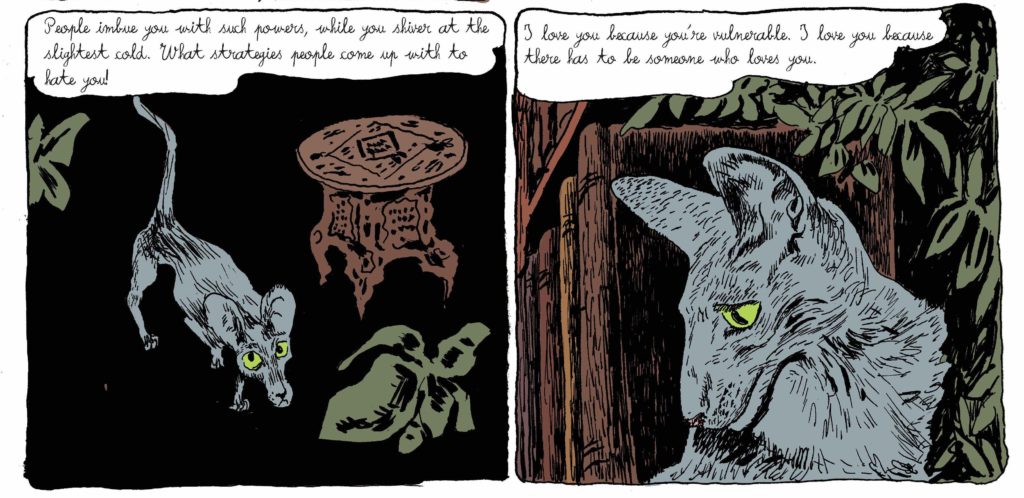
4. JOHN BLACKSAD
Script by Juan Díaz Canales & art by Juanjo Guarnido, Dark Horse (2010), originally published in French by Dragaud
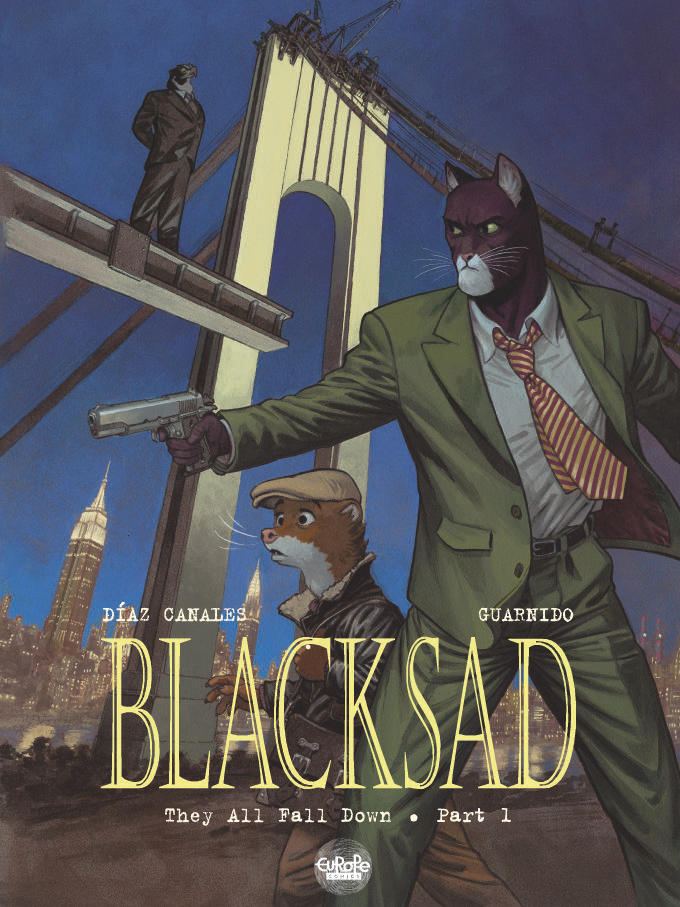
Private Investigator John Blacksad has the coolness of Old Hollywood and the classic detective novels of Raymond Chandler, Dashiell Hammett, and co. His name suits him down to a T with such noir and melancholy, as well as the fact that he’s a large black cat. In addition to having seen too much horror overseas in Europe during World War II, he remains unlucky in love, often down on his luck with barely a penny to his name. His sorrow is vast but only ever hinted at as he tries to fight the good fight in this morally dubious world, all too aware of his own complicity as he tries to carry out what he sees as justice. Murder, robbery, prejudice, and deception abound as his cases take him through Los Angeles, New York, New Orleans, Amarillo, Texas, and Denver, Colorado.
And not just run of the mill crimes either, Blacksad gets himself entangled in the most grim of the grim, heavy soul-hurting stuff. But always dressed in a suit, he’s fast on his feet, and quick with his mind too, as well as having a good way of wording truths, describing on villain in the first book as “a person rich in privilege but dirt-poor in moral fiber”, even as he knows his own way of operating isn’t completely clean. And – exciting news! – on October 21, 2021, Blacksad will be back for his sixth adventure.
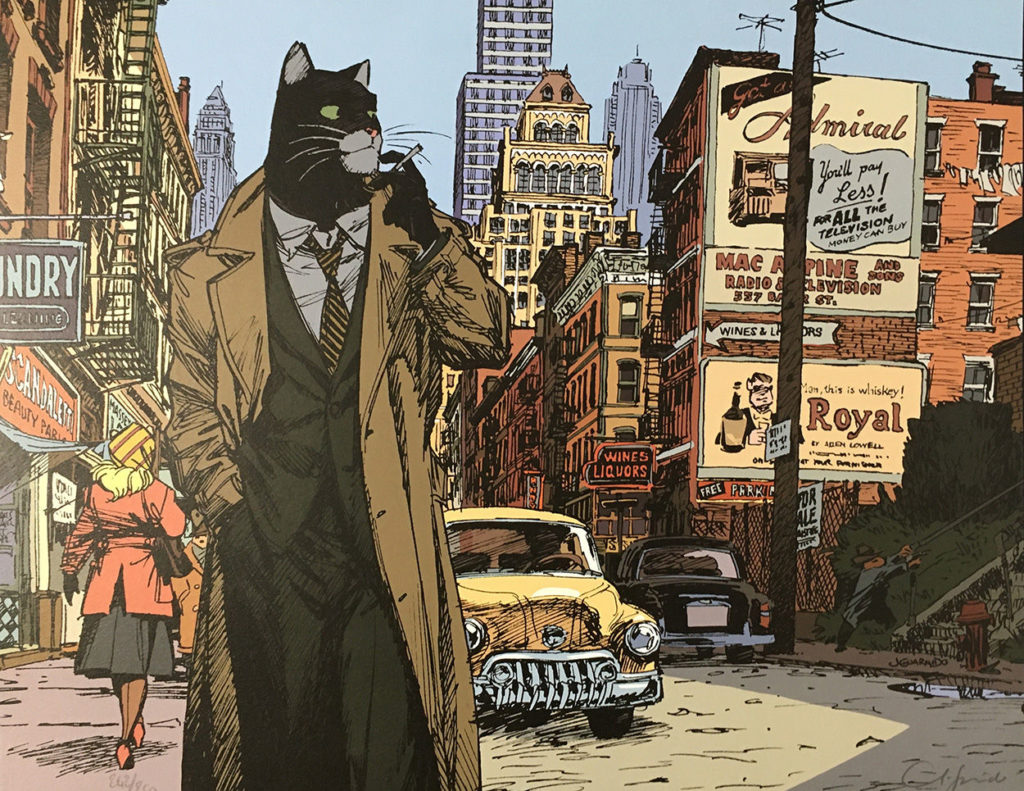
5. GOGOL from BILAL’S THE NIKOPOL TRILOGY
Art & script by Enki Bilal, Titan Comics (2016), originally published in French by Casterman
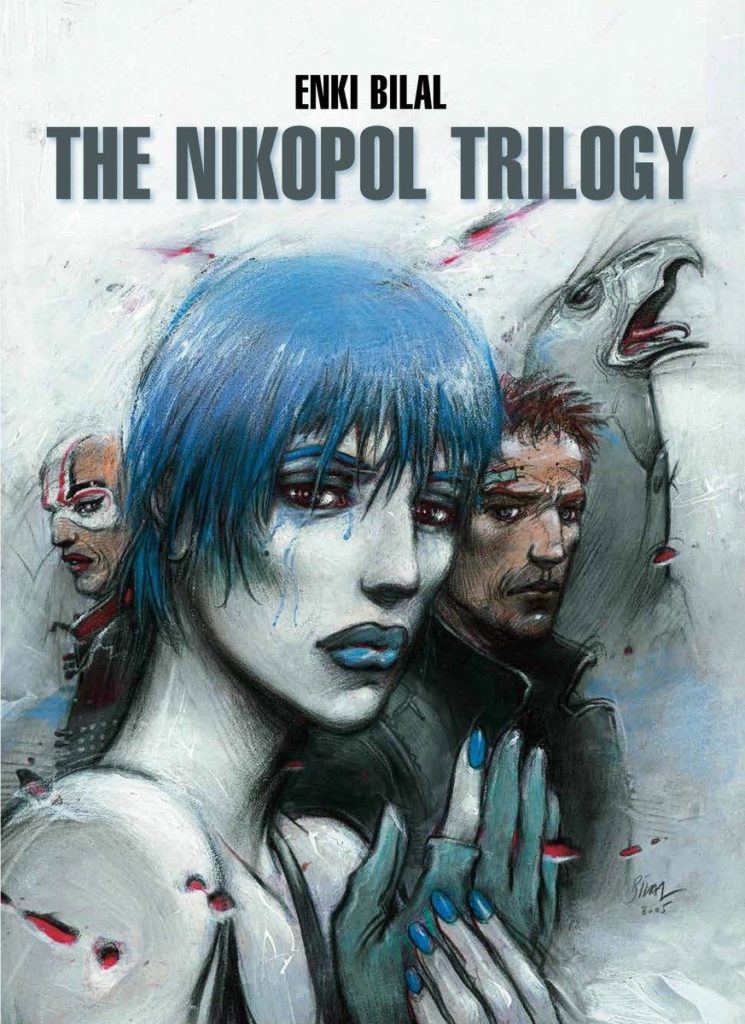
An emerald green and white striped telepathic cat?! Awesome. Although only a minor player in Enki Bilal’s The Nikopol Trilogy (comprising 1980’s A Bedlam of Immortals, 1986’s The Woman Trap, and 1992’s Cold Equator), Gogol’s coolness is worthy of his own series. Set in Paris, London, Berlin, and equatorial Africa on a future Earth (2023 and beyond) ravaged by war, climate, disease, drugs, and greed, complete with a lingering visitation from ancient Egyptian gods from space, we follow the life of Herakles Nikopol who has returned to France after spending thirty years cryogenically frozen in a satellite and whose body the falcon-headed god Horus chooses to inhabit. Gogol starts off as the pet/confidant of General Aurelien in the corrupt Parisian government of Jean-Ferdinand Bunglieri, and our first glimpse of this rad cat shows his agitation at Bunglieri’s decision to declare war on the vulnerable in order to obtain the resources necessary to negotiate with Anubis and the gods. Gogol is often seen expressing dissatisfaction at Bunglieri’s quest to become immortal.
The cat, able to also shield its owner from telepathic attacks, plays a role in the governmental switch-up, always keeping the same irritated demeanor. When we next see Gogol in book two, he’s now all black and the consort of Nikopol himself. Later, leaving Europe where there’s a price on this cat’s head, he unexplainably switches back to his chic green and white fur.

It’s always a heavy moment when you learn that Azrael is the Angel Of Death in the Judaic and Islamic traditions, but luckily Gargamel’s cat is less sinister than the name would imply. Still she (or he, in the later movies and comics) is much bigger than our little blue friends and always eyeing them up as food, so maybe there is something in this name from a Smurf perspective. Apparently it was Spirou editor-in-chief Yvan Delporte who suggested the rhyming names of Gargamel and Azrael to Smurfs creator Peyo, the two men collaborating on many Smurfs adventures together. Our introduction to this dastardly duo is in ‘The Smurfnappers’ (Le Voleur de Schtroumpfs) in the Les Schtroumpfs noirs album (later translated as The Purple Smurfs), Azrael first glimpsed in silhouette in the last panel of the first page. While at first this cat eagerly follows Gargamel in his quest to obtain power and money, usually involving needing a Smurf as a vital ingredient of a potion, over time we see Azrael often confused by her master’s actions, not wanting to be interrupted from her nap for another hare-brained scheme, even laughing at the sorcerer when he fails. These episodes produce some great looks from the cat, loveable facial expressions of curiosity, amazement, and annoyance.
There’s a big discrepancy between Gargamel’s grand evil plans and Azrael’s simple desires to eat and sleep. Azrael shows herself to be by turns both smart and stupid when pursuing her prey – cunningly pushing a bottle containing a smurf off Gargamel’s shelf but then also letting herself be tricked into jumping out a window. It seems no matter what Azrael does, she is forever foiled in her plans to enjoy a smurf as a snack. And yet, whenever she’s on the scene, our attention is always drawn to her.
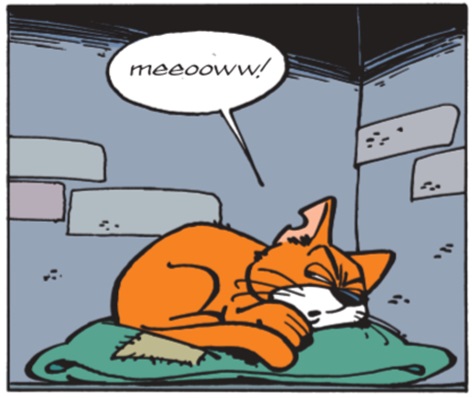
7. THE LYING CAT from SAGA
Script by Brian K. Vaughan & art by Fiona Staples, Image Comics. (2014)
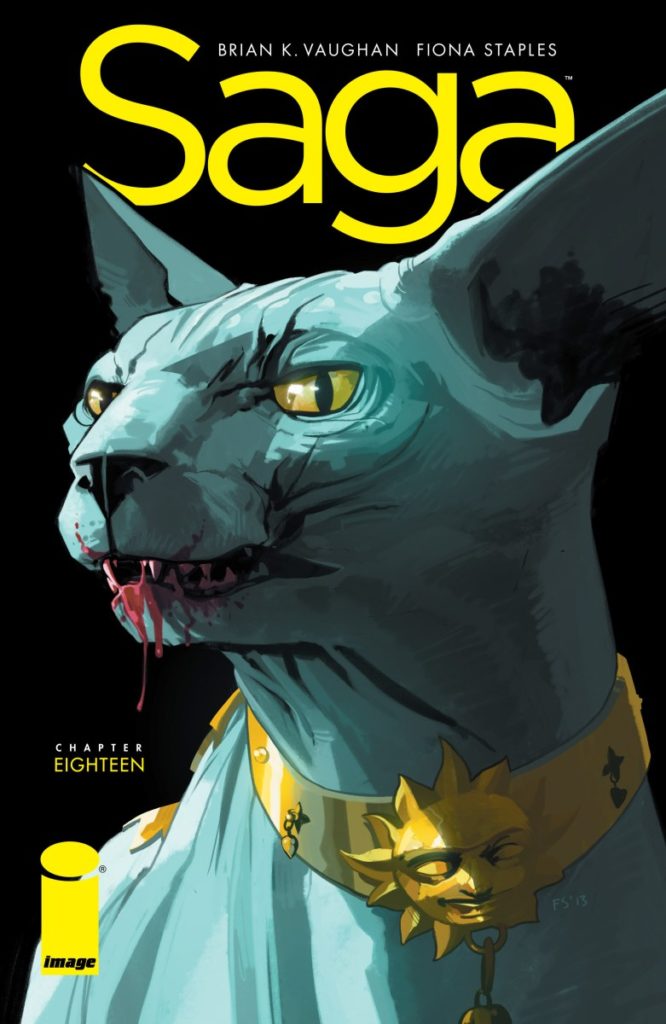
Lying Cat is the sidekick of The Will, the freelance bounty hunter hired by unicorn-horned Vez to track down and kill Saga’s interplanetary protagonists Marko & Alana and bring in their hybrid daughter Hazel unharmed. This large blue-grey Sphynx-like feline with gold collar and cape is one of a breed that has the ability to immediately sense when anyone isn’t telling the truth, calling out their targets with the sneered simple hiss of “lying”. This is the only word she can actually speak, communicating otherwise with ‘rmmrow’s and ‘hnf’s, plus a wide variety of facial expressions, admirably able to convey the toughness of uncomfortable truths. Her gift is a reflex and of this she is very self-aware, often awaiting her own pronouncements with anticipation and concern, even humorously turning her powers on her master and challenging The Will’s own words. While Lying Cat is often portrayed as vicious and on guard, always ready to sniff out deceit, she becomes more emotive when interacting with those she cares for – The Will, and later six-year old Sophie, rescued from the planet Sextillion.
Although it’s later revealed that L.C. was the runt of her litter, she is still a formidable presence. When she disappears for five issues, it’s with a great combination of menace and humor that she returns for a wonderful full-page spread in issue #24. Despite her detection abilities, and the fact that she’s travelling to various strangely inhabited planets, Lying Cat might be the closest in this list to the cats we know on planet Earth, laying completely relaxed next to someone she likes or who is petting her. Hopefully the series will return soon and we’ll get to see more of her. I, for one, cannot wait. And that’s no lie.
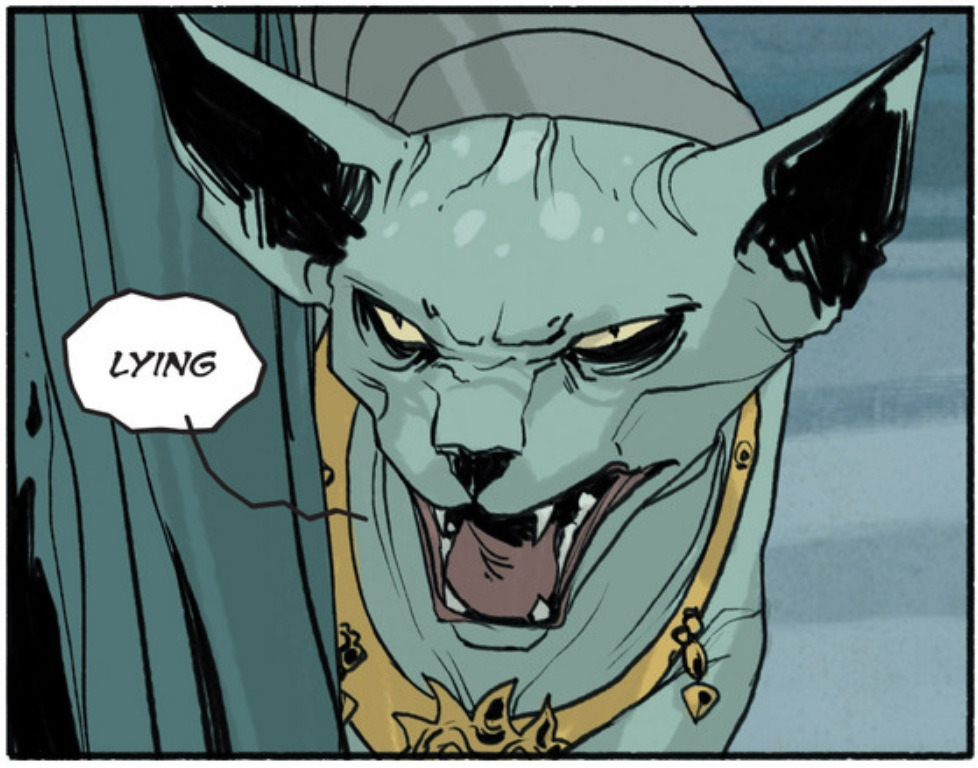
8. CYBORG KURO-CHAN
Art & script Yokouchi Naoki, Kodansha (1998)
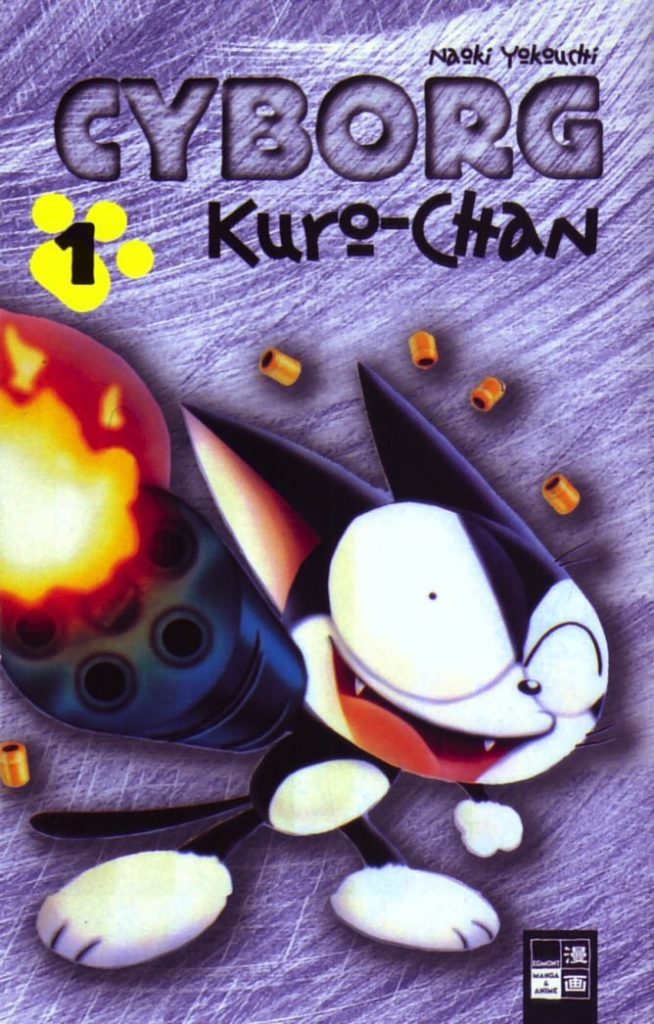
Cyborg Kuro-chan’s titular cat is an explosive ball of energy. Quite literally, as he’s got a Gatling-style machine gun arm and attempting to give his new robot body the slightest tune-up can send missiles firing. Almost everything about him is fast, and this insane speed is reflected in the anime show’s theme song. He’s incredibly quick to sort out whatever it is he’s doing, whether that’s crossing the Pacific Ocean via a bird or ingenuously tricking a restaurant into delivering him, and some food, to where he needs to go. Powered by such swiftness, spirit, and smarts, Kuro-chan is also a great deal of fun. His everyday life as a watch cat to an old, somewhat hapless, retired couple is constantly interrupted by the wildest of adventures after the mad scientist Dr. Gô turns him into a cyborg in a bid to take over the world. Luckily Kuro escapes and in a quick-witted burst of awesomeness dives into one of those machines with a mechanical arm to grab your prize, stealing a stuffed animal cat to cover his new metal body. And from there the rampage begins, with crazy chases over land and through water and air as well, as Kuro is called upon to protect his owners, friends, and even Japan itself.
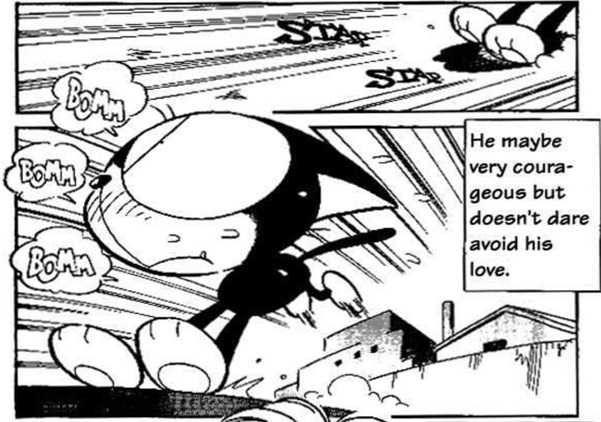
9. GRUMPY CAT
Script by Ben McCool, Royal McGraw, Elliott Serrano, Ben Fisher & art by Steve Uy, Ken Haeser, Dynamite Comics (2015)
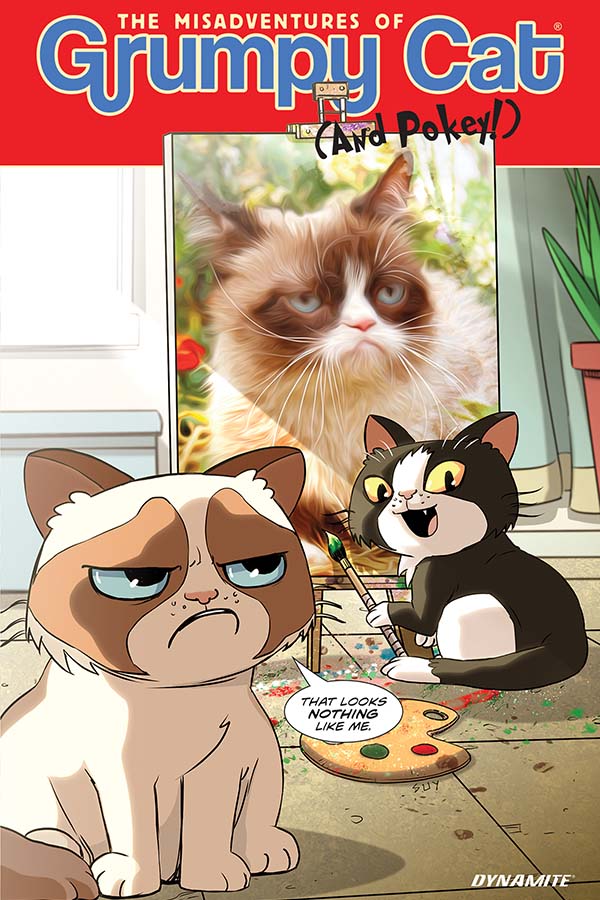
Know-it-all, world-weary, and perpetually bored Grumpy Cat is nonetheless loved for these qualities. We’re all familiar with people like these but also know that they can possess a certain charm. Which Grumpy Cat exudes. When her “brainless brother” and sidekick, Pokey, convinces Grumpy to head to the circus, despite her seeing through all the tricks, Grumpy finds herself the main attraction precisely because of her grumpiness, and is mobbed by an adoring crowd eager for photos. And yet even such attention never appeals as she doesn’t care much for humans and would always rather just be sleeping.
She’s funny while claiming to be “allergic to fun”, and though fond of the phrase “let me stop you right there” is always ready with a one-liner herself. Grumpy grumbles about everything but doesn’t particularly want anything to change either and, unable to find anything that actually appeals, deals in the “least awful” option. For the most part her motto is ‘why bother?’, though she does occasionally go to elaborate lengths to trick the eternal optimist Pokey out of his treats. With all this to her name, Grumpy does hold a high attitude of herself, believing herself “quite the genius” and knowing her power both as a cat, whose kind are beloved by humans, and a grump at that. And despite Grumpy never much seeing the point in doing anything, she and Pokey go on many adventures for us to enjoy.
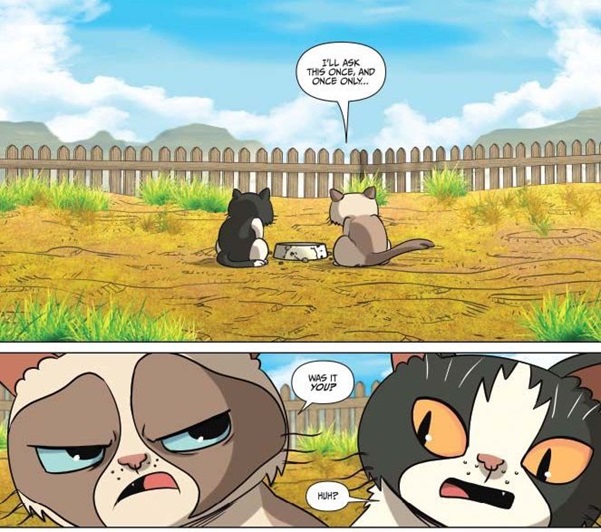
10. RAY SMUCKIES from ACHEWOOD
Art & script by Chris Onstad, Achewood (2010)
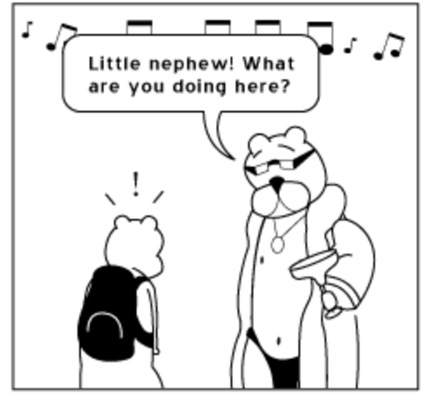
Achewood’s ridiculous alpha cat is one of the funniest characters to be found not only in comics but anywhere. The master of a final panel burn, Ray made his first appearance on the much-loved web comic on January 10, 2002, three months into its decade-plus run, and quickly became a fan favourite. As he describes himself on his hilarious blog, he’s “the Main Chochacho of this Whole Place” – the fictional city of Achewood, California. He’s usually seen wearing only designer glasses, medallion necklace, black thong, and, with his predilection for Ketel One vodka, holding a martini glass. When we initially encounter him, Ray’s lack of money is one cause of trouble with his already estranged girlfriend Tina, but after a series of ill-advised business ventures, Ray inadvertently signs his soul away to the Devil, causing his Ragtime Detention Center album to sell 34 million copies. The single ‘Everybody Dance Likes There’s Ass In Your Pants’ is a bona fide hit, and, his money problems solved, the long-time dream of starting “a rap company” with his best friend Roast Beef is now becoming a reality. And from there, for years afterwards, things only get more wonderfully silly. Ray’s varied absurd interests mean that you never know where his flights of fancy are going to take him – purchasing the Airwolf helicopter and Keith Moon’s head on ebay, inventing ‘hip-hobbit’, hiring James Brown’s former butler – and his responses to anyone else’s input, whether talking to friends or in his advice column, Ray’s Place, are almost entirely unpredictable. With all this, when Ray does show care or concern for his compatriots, it is somehow all the funnier. A testament to creator Chris Onstad’s formidable talent.
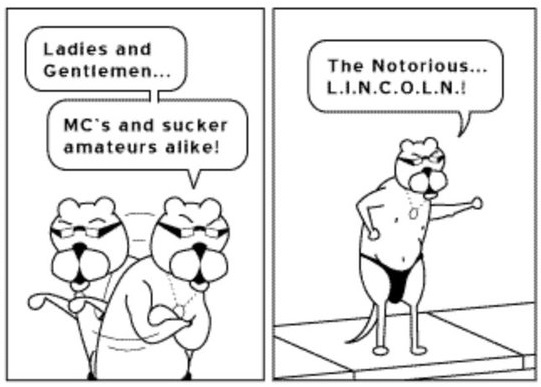
11. GARFIELD
Art & script Jim Davis, Random House (1978)
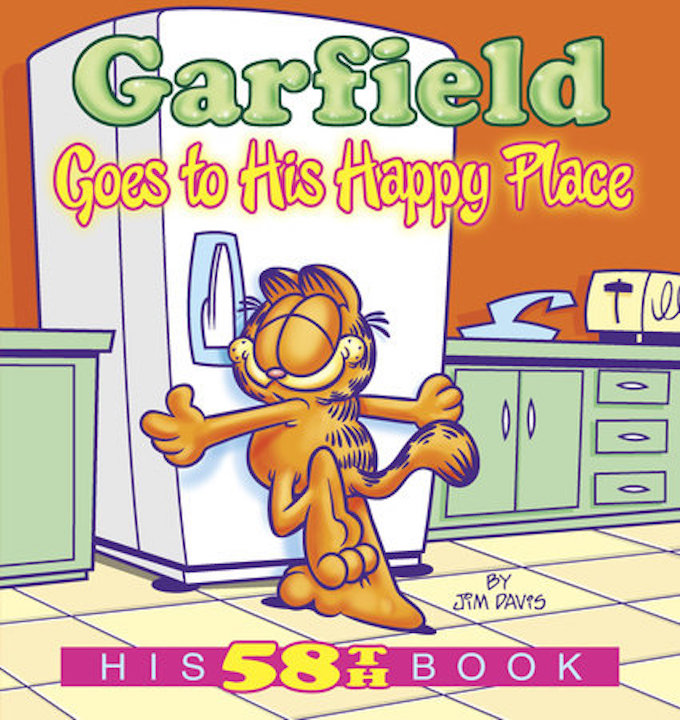
And of course such a list wouldn’t be complete without the lasagna-loving spider-hating cynical orange cat that’s been entertaining families for 40 plus years now. Garfield is most likely the first name you think of when someone mentions cats in comics. First appearing in The Pendleton Times newspaper strip Jon in creator Jim Davis’ home state of Indiana in 1976, the following year the comic was renamed Garfield after Jon’s more loveable cat and began its nation-wide syndication in the U.S.A. on June 19, 1978. Since then this feline’s fame has risen and risen internationally through books, tv shows, video games, films, and even a stage show and virtual restaurant serving Garfield’s favourite snacks. Not bad for a cat who seems happiest when he’s sleeping.
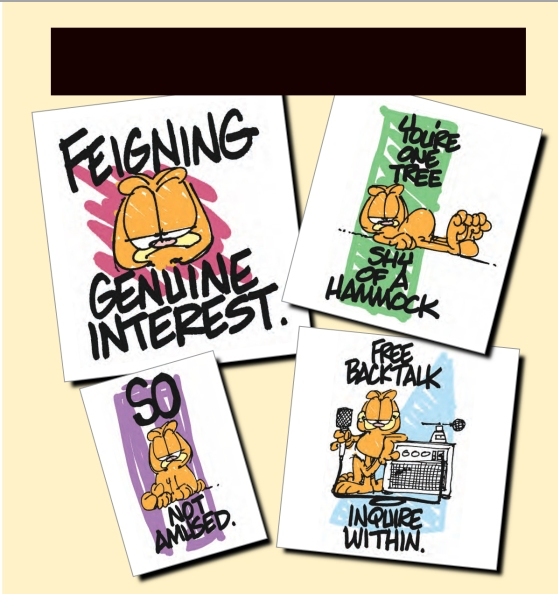
Header image: [BLACKSAD] © Díaz Canales & Guarnido, Dargaud (2021)
